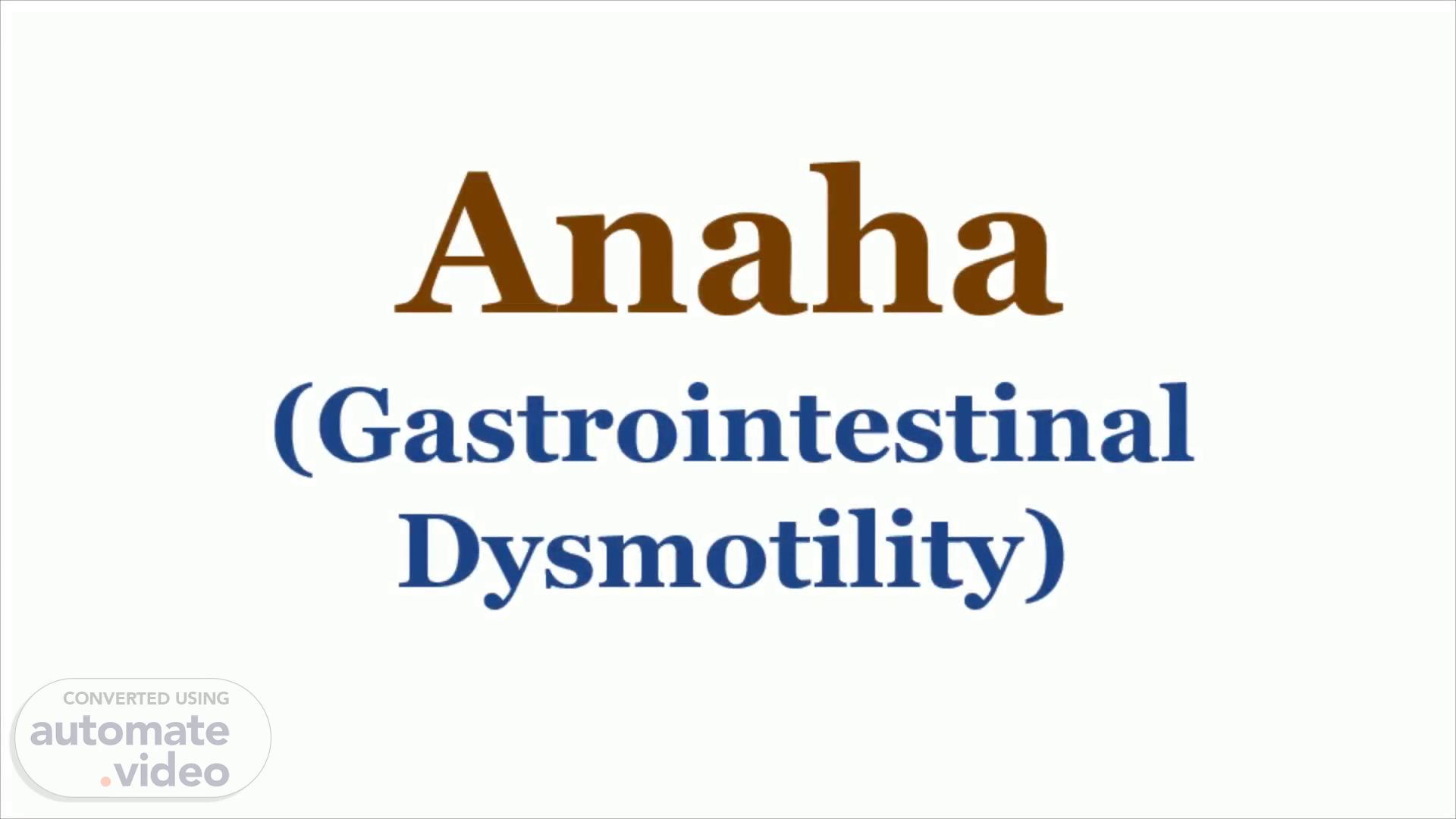
Page 1 (0s)
Anaha (Gastrointestinal Dysmotility).
Page 2 (6s)
Definition. आमं शकृद्वा निचितं क्रमेण भूयो विबद्धं विगुणानिलेन ।। प्रवर्तमानं न यथास्वमेनं विकारमानाहमुदाहरन्ति । Su. UT. 46/20 आमम् अपक्वान्नरसः, शकृत् पुरीषं, निचितं वृद्धिगतं, विबद्धम् अवरुद्धं, विगुणानिलेन उन्मार्गवायुना, न प्रवर्तमानमिति नाधःप्रवर्तमानमित्यर्थः, यथास्वं यथामार्गमित्यर्थः Acharya Dalhan on Su.UT 46/20 Anaha is an clinical condition associated with stasis of indigested food particles and stool in GI tract in the absence of of appropriate gut movement..
Page 3 (26s)
Gastrointestinal Dysmotility. Gastrointestinal dysmotility is the term used to describe a variety of symptoms that occurs due to inappropriate propulsion of food contents in gastrointestinal tract. The muscles of the intestinal tract help to propel food from the mouth, down the oesophagus, through the bowel and out through the anus. Under normal circumstances, the muscles of the bowel contract in a coordinated fashion. Innervation plays an important role in the regulation of GI motility. The intrinsic or enteric nervous system forms the myenteric plexus with ganglia being located between the circular and longitudinal portions of the muscular layer..
Page 4 (53s)
Causes of GI Dysmotility. Idiopathic Diabetes mellitus Post Gastrointestinal Surgeries Others Systemic Diseases – Includes Parkinson’s disease Sytemic sclerosis Injury to nerves in the spinal cord.
Page 5 (1m 3s)
Types of Anaha. Ama Jonnyo Anaha (Gastroperesis) Purish Jonnyo Anaha (Intestinal Dysmotility).
Page 6 (1m 11s)
Ama Jonnyo Anaha. तस्मिन् भवन्त्यामसमुद्भवे तु तृष्णाप्रतिश्यायशिरोविदाहाः ।। आमाशये शूलमथो गुरुत्वं हृल्लास उद्गारविघातनं च । Su.UT. 46/21 उद्गारविघातनम् उद्गारस्यासम्यक्प्रवृत्तिः। केचिदामसमुद्भवे आमाशयसमुद्भवे इति व्याख्यानयन्ति, Acharya Dalhan on Su. UT. 46/21 Amashaya usually denotes the segment of gastrointestinal tract that lies just above the the pyloric sphincter..
Page 7 (1m 28s)
शूलमथो (Pain) गुरुत्वं (Bloating) हृल्लास (Nausea) उद्गारविघातन (Absence of belching).
Page 8 (1m 35s)
Purush Jonno Anaha. स्तम्भः कटीपृष्ठपुरीषमूत्रे शूलोऽथ मूर्च्छा स शकृद्वमेच्च ।। श्वासश्च पक्वाशयजे भवन्ति लिङ्गानि चात्रालसकोद्भवानि । Su.UT. 46/22 ते च पक्वाशयोद्भूत आनाहः पुरीषाद्भवति इतीच्छन्ति; Acharya Dalhan on Su. UT. 46/22 Pakkashaya usually denotes the intestinal segment of gastrointestinal tract. In human anatomy, the intestine (bowel or gut) is the segment of the gastrointestinal tract extending from the pyloric sphincter of the stomach to the anus..
Page 9 (1m 56s)
Management of Ama Jonnyo Anaha. आमोद्भवे वान्तमुपक्रमेत संसर्गभक्तक्रमदीपनीयैः ।। Su UT. 46/23 वान्तं कृतवमनं नरम्। संसर्गभक्तक्रमः पेयादिक्रमः। दीपनीयानि पिपल्यादिसाधितानि।। Acharya Dalhan on Su.UT. 46/23 Therapeutic Emesis followed by oral administration of Dipan dravya.
Page 10 (2m 9s)
Management of Purish Jonnyo Anaha. अथेतरं यो न शकृद्वमेत्तमामं जयेत् स्वेदनपाचनैश्च । Su.UT. 46/24 तस्य पुंसस्तमानाहमितरं पुरीषजम् आमान्वितं स्वेदनादिभिर्जयेदिति सम्बन्धः Acharya Dalhan on Su.UT. 46/24 Application of the hot compression to the anterior abdominal region or lumbar region improves the peripheral hemodynamics and gastric motility, suppresses sympathetic activity, and promotes parasympathetic predominance. Activation of sympathetic nervous system are responsible for reduced intestinal peristalsis while the parasympathetic nervous system reacts conversely..